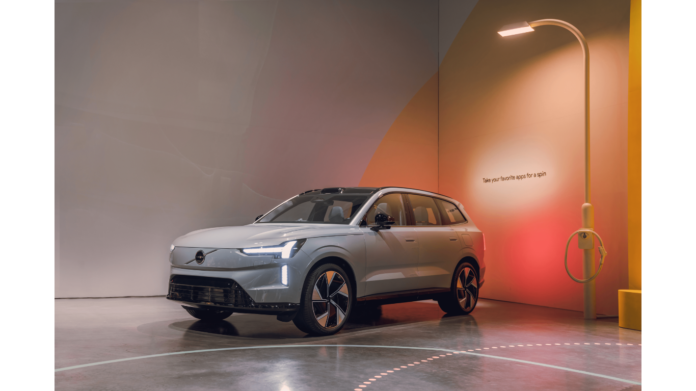In the upcoming Volvo EX90, lidar, cameras and radars come together to understand the car’s surroundings and help keep passengers safe. To further improve their assisted driving technologies and eventually reach autonomous driving in the future, Volvo also needs a way to recognise their environment at detail – both immediately in front of it and at longer distances beyond the twists and turns ahead. Enter Google’s HD map – a comprehensive map designed specifically for car makers that provides highly detailed and up-to-date road information.
Continuing its longstanding collaboration with Google, Volvo Cars and its strategic affiliate Polestar could be the first car makers to bring their HD map technology into their cars, starting with the recently unveiled Volvo EX90 and Polestar 3.
‘The above animation is intended to illustrate Volvo Cars’ development efforts of Pilot Assist, its assisted driving feature, with support from Google’s HD map as well as input from its advanced exterior sensors set made of a lidar, 5 radars, and 8 cameras. It is not illustrative nor indicative of Google’s HD map’s exact capabilities or applications.’
By integrating Google’s HD map, Volvo will be able to bring together data from its industry-leading sensor set in the Volvo EX90 with Google’s precise lane-level and localisation data to facilitate assisted driving features like lane change assistance and Volvo Cars’ Pilot Assist technology, as well as future autonomous driving functionality.

“The addition of Google HD Maps in our future car line-up marks an expansion of our strategic collaboration with Google, reflecting our commitment to work with technology leaders,” says COO and Deputy CEO Javier Varela. “Implementing Google HD Maps in our upcoming cars will help us offer our drivers a more enjoyable driving experience and in future contribute to the introduction of safe autonomous driving.”
“Building on our long history of mapping the world, Google’s new HD map is designed specifically for automakers and provides comprehensive lane-level and localization data that is crucial to powering the next generation of assisted and autonomous driving systems,” says Jorgen Behrens, VP and General Manager of Geo Automotive, Google. “We’re excited to continue partnering with leading automakers like Volvo Cars to improve the safety and comfort of drivers everywhere.”
This road information combined with the data from the Volvo EX90’s lidar and other sensors will be processed through the car’s core computer system powered by NVIDIA DRIVE AI Platforms Xavier and Orin.

By combining data from Google’s HD map with information collected from its exterior sensors, including a lidar and software developed by safety software company Zenseact, Volvo aims to create a more predictable, safe, and comfortable drive. Google’s HD map will also support the introduction of Volvo’s autonomous driving technology in combination with its sensor set consisting of a roof-integrated lidar, radars, cameras and ultrasonic sensors, to further improve the car’s understanding of its environment.
In the future, Google’s HD map will also support the introduction of Volvo’s autonomous driving technology in combination with its sensor set consisting of a roof-integrated lidar, radars, cameras and ultrasonic sensors, to further improve the car’s understanding of its environment.
Also Read
Volvo Cars Tech Fund invests in Bcomp sustainable Lightweight Material
Qualcomm partners Microsoft, Volvo Cars and Renault Group to boost digitalization






